Hazelburn is one of three brands produced by the Springbank distillery in Campbeltown on the southwestern coast of Scotland’s mainland. Once a major center of whisky production, Campbeltown today only boasts three surviving distilleries. Springbank’s primary product (Springbank label) is two-and-a-half-times distilled and mildly peated. Its Longrow malt is double-distilled and fully peated (it’s often compared to similar Islay malts). Hazelburn, however, is triple-distilled and unpeated. This makes it very similar to Lowlander Auchentoshan and a few Irish triple-distilled single malts and single pot-still whiskies. The triple distillation yields a fruitier, lighter-weight, and (in this case, at least) lighter-flavored malt. The basic 8-year is priced quite high for its age, and for me occupies a no man’s land between affordability and cult appeal. If light whisky is your thing, you owe it to yourself to splurge on one of the expressions of Hazelburn (they make a Sauternes-finished version that I have my eye on). If you like robust and fully-flavored malts, steer clear.
Hazelburn, like the rest of Springbank’s lineup, is not chill-filtered and has no added coloring. Note that Springbank’s higher-than-usual prices in the US are apparently due to importers or distributors, and can be found for much more reasonable prices in the UK. If you’re interested in anything from Springbank, I suggest trying to order it from the UK (make a large order to spread the shipping cost across multiple bottles).
Nose: White peach and vanilla. Very mild and soft, elements of sugar cookie and white raspberry, and a ghost of spearmint. Elegant and floral, but not very complex.
Palate: Mildly creamy body, with some high acidic notes of green fruits and dry white wine. Progresses into white chocolate and macadamia nuts.
Finish: A hint of Springbank style, with a nutty oiliness that only emerges on the finish. Hazelnut skins, vanilla bean, and rice pudding. On the tail end, a little bitterness.
With Water: A spare few drops of water bring out a little green apple skin in the nose, but also up the octane of the alcohol vapors. Water adds a suggestion of … peat?! to the palate, although it fades quickly. I would leave out the water.
Overall: Very light and unassuming. A bit like Auchentoshan, but with nuttier flavors like hazelnut and white chocolate. Worth the price of a full bottle? Only if you’re crazy for the lighter style of triple-distilled whisky.
Update 12/18/2017: Turns out 4 more years in oak makes a big difference for Hazelburn…


About The Distillery
Springbank is a composite of rarities. It is one of the very few distilleries that performs the entire distillation process from malting on-site (its own floor maltings) to bottling in its private bottling plant. In fact, it is the only fully self-sufficient distillery in Scotland. Located in Campbeltown on the lyrical Mull of Kintyre, it is also one of the few surviving distilleries (of three, with Glen Scotia and Glengyle) from a once-great region of Scotch distillation. In 1887 there were 21 distilleries in Campbeltown, and it was sometimes called “The Whisky City.” Hard times and a self-perpetrated degradation in quality (and thence, reputation) during the American period of Prohibition scoured the region, putting most distillers out of business.Springbank claims that hand-turned floor maltings (as opposed to pneumatic or machine-aerated commercial maltings), while labor-intensive, yield a malt that is better because it germinates more slowly. The distillery uses traditional worm tubs, a cast-iron mash tun, and employs mechanical ‘rummagers’ (to prevent a buildup of burnt deposits) in the copper stills, which are heated with a combination of steam and direct oil fire. Springbank uses three stills to create a 2.8-time (not triple) distillation. Now hold on, because this math is tricky: The first “wash” distillation produces so-called “low wines”, which are around 20% alcohol. A second distillation produces an intermediate distillate, which is in the neighborhood of 35% alcohol. A third still is charged with a solution of 80% of this double-distillate and 20% of the “low wines,” and a third distillation is performed. Thus, in the final spirit, around 80% of the volume has been triple-distilled, while around 20% of the volume has been double-distilled. Hence, 2.8x distillation. Phew! For a fantastic and in-depth guided tour of Springbank distillery, be sure to check out Ralfy’s visit (scroll down).
Springbank also makes Longrow (a peated malt) and (new in 2006) Hazelburn (unpeated, truly triple-distilled). These, along with the distillery’s flagship Springbank bottlings, are all non-chill-filtered, have no caramel coloring, and are reduced to bottling strength on-site with the same water used to produce the whisky. The water, like all Campbeltown whiskies, comes from the Crosshill Loch in the hills above the town, and is supplemented by a private well from a borehole drilled deep into the rock beneath the town. Note that the Springbank “CV” bottling, which is at a similar price-point, is purportedly a vatting of 6, 8, and 12 year-old malts (unverified), from different barrel finishes.
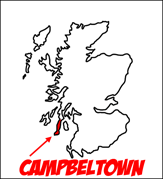


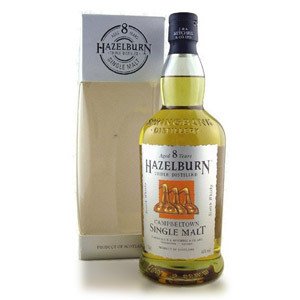
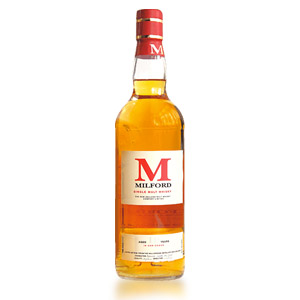


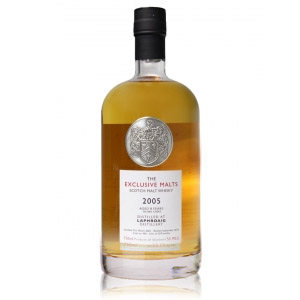
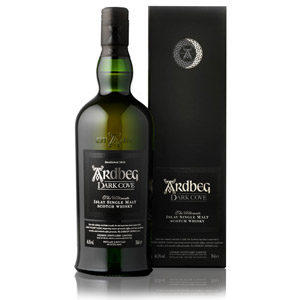
It sounds subtle and intriguing from your description, but from your overall remarks I take it that this one didn’t really stand out.
@WhiskyCritic No, it didn’t really. Perhaps it’s the age. It was definitely more complex than Auchentoshan Classic, which is pretty one-note, but it doesn’t hold a candle to the myriad flavors present in Springbank. I am looking forward to trying older expressions though, as I think it has a lot of potential for a “light” whisky. I’m just not crazy about spending $70 for a bottle of 8 year-old!
Seems a LITTLE pricey for an 8 year old! Solid read though!
I seem to be a minority among scotch drinkers because this sounds right up my alley. However, I’m not sure I’d splurge when Auchentoshan is so much more affordable.